Sewing sequins by hand is a timeless craft that adds a touch of elegance and personality to clothing, accessories, and home decor. This artful technique allows you to create dazzling designs that reflect your unique style.
Whether you’re enhancing a formal gown, reviving vintage clothing, or embellishing handmade crafts, hand-sewn sequins provide endless creative possibilities.
In this step-by-step guide, we will walk you through the process of sewing sequins by hand, from selecting the right materials to achieving a flawless finish.
With a little patience and practice, you’ll master this skill and be able to infuse any project with a brilliant, eye-catching sparkle.
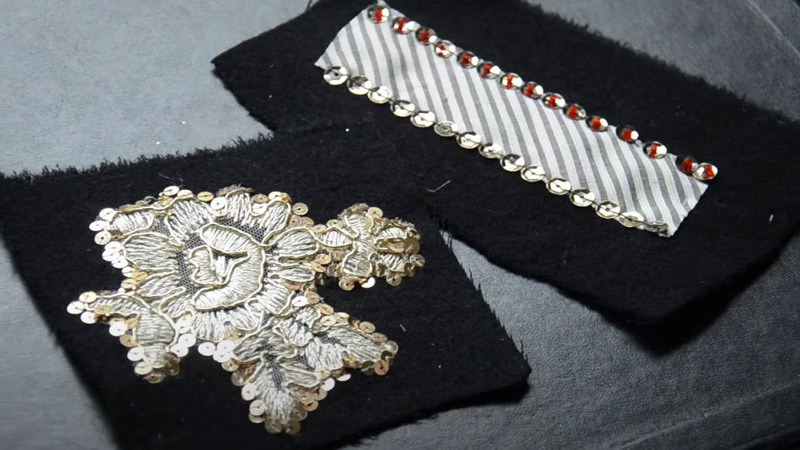
7 Steps to Sew Sequins by Hand Easily
Sewing sequins by hand can add a touch of glamour and sparkle to your clothing, accessories, or craft projects.
Whether you’re embellishing a costume, or a formal dress, or creating unique home decor items, hand-sewn sequins can provide that extra flair.
Here’s a step-by-step guide on how to sew sequins by hand:
Materials you’ll need:
- Sequins
- Needle
- Thread
- Fabric or Project
Step-by-step instructions:
Step 1: Prepare your materials
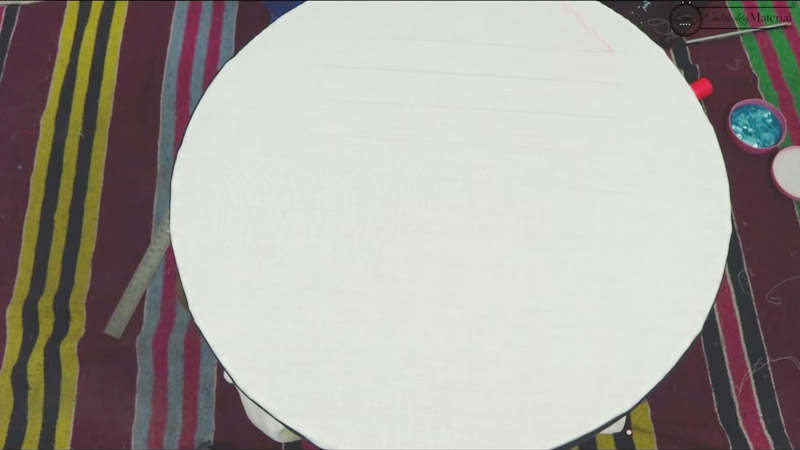
Before you start sewing, it’s essential to prepare your materials. Thread your needle with a length of thread, typically no longer than 18 inches to prevent tangling.
Make sure to tie a knot at the end of the thread, leaving a short tail. This knot will anchor your thread and prevent it from pulling through the fabric as you sew.
Step 2: Plan your sequin placement
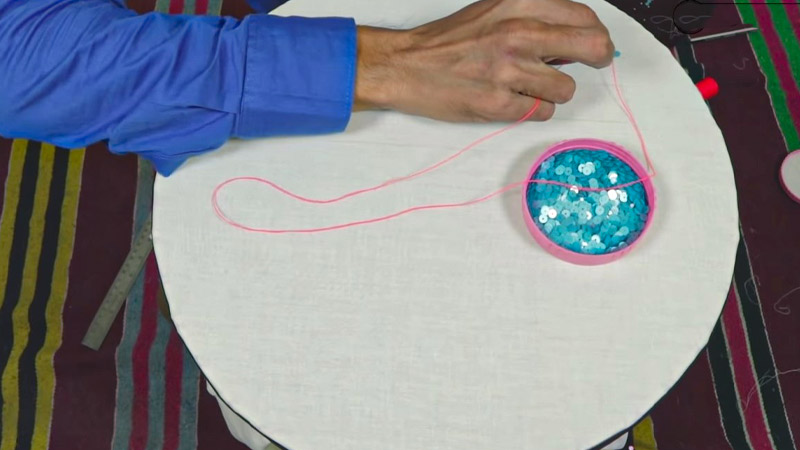
Take some time to plan where you want to place your sequins on your fabric or project. Lightly mark these spots with a fabric marker or chalk to provide guidance as you sew. Having a clear plan will help you achieve the desired design or pattern.
Step 3: Start sewing
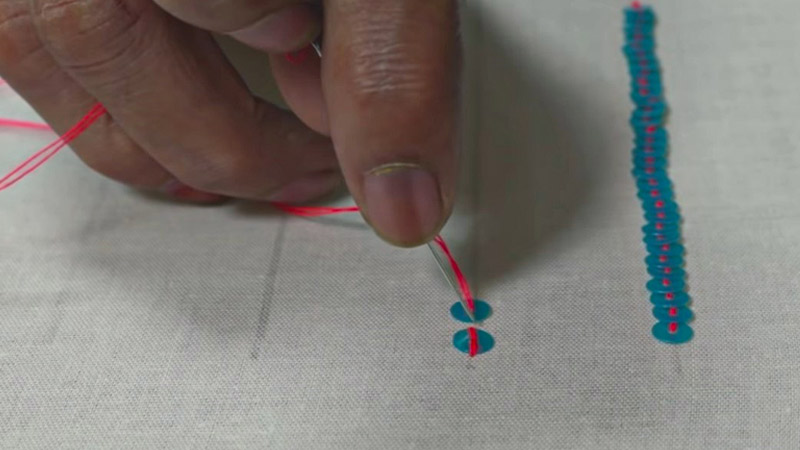
With your materials prepared and your plan in mind, you can begin sewing. Start by bringing your threaded needle up from the backside of the fabric to the front at one of your marked spots.
Carefully slide a sequin onto the needle, ensuring that the concave side (the cupped side) faces up. Gently slide the sequin down the thread until it rests flat against the fabric.
Step 4: Secure the sequin
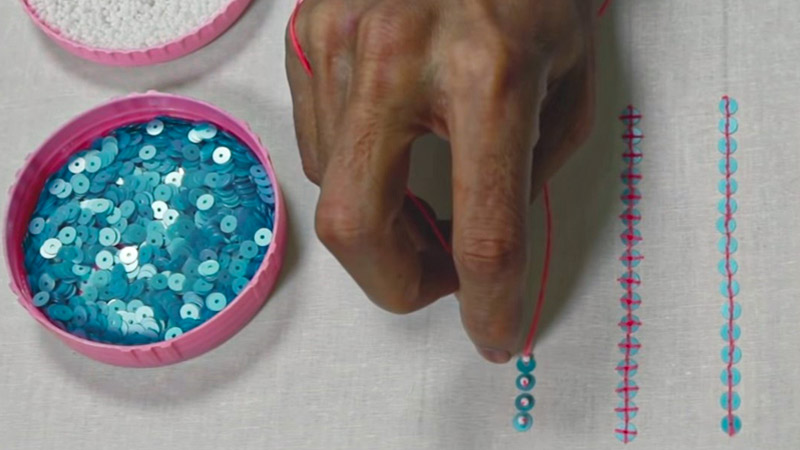
Securing the sequin in place is crucial for a tidy and durable finish. Pass the needle back down through the hole in the center of the sequin. As you do this, make sure to pull the thread taut. This action ensures that the sequin lays flat against the fabric and doesn’t flop around.
Step 5: Repeat the process
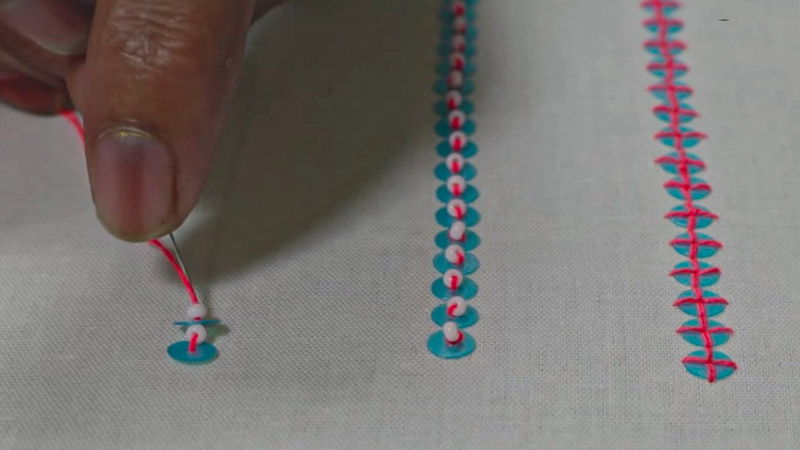
Continue adding sequins in the desired pattern or design. It’s essential to maintain consistent spacing between sequins for a neat and even appearance.
You have creative freedom here, so you can add as many sequins as you like, varying sizes, colors, and shapes as needed to achieve your desired look.
Step 6: Finish sewing
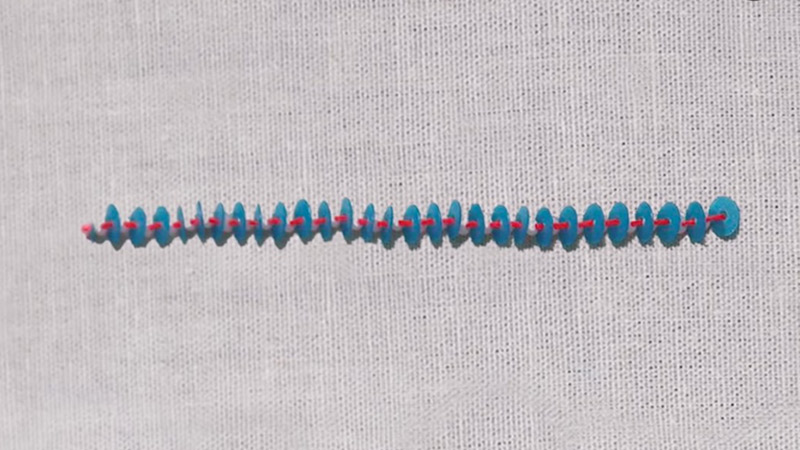
When you’ve added all the sequins you want and are satisfied with the design, it’s time to finish the sewing process. Secure your last sequin by passing the needle down to the backside of the fabric.
Once on the backside, tie a knot with the thread to secure the sequins in place. Finally, trim any excess thread.
Step 7: Final touches
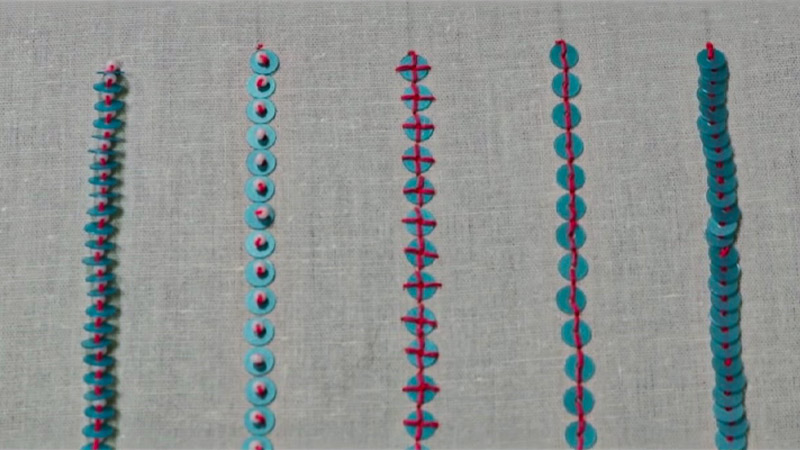
Take a moment to inspect your work carefully. Ensure that all sequins are securely attached to the fabric. If you find any loose sequins, reinforce them by sewing through their center holes again.
5 Unique Hand Sewing Sequins Ideas
Adding sequins to your projects can infuse them with sparkle and personality.
Here are five unique and creative ideas for hand-sewing sequins to add a touch of flair and personality to your projects:
1. Ombre Sequin Design
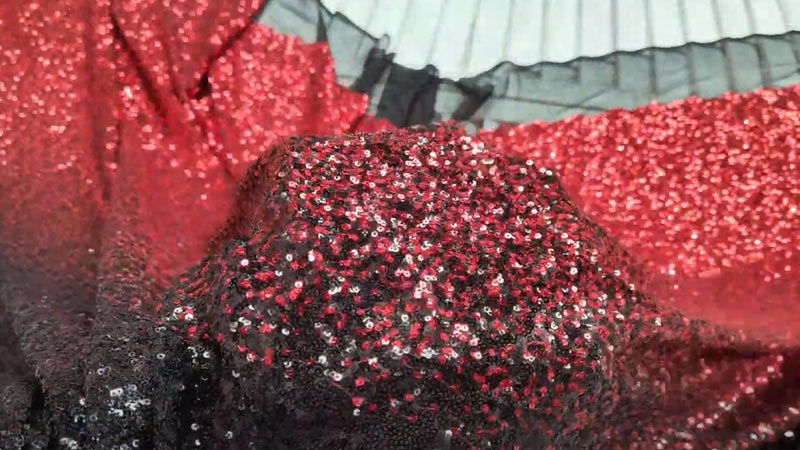
Create a stunning ombre effect by sewing sequins in a gradual color transition. Start with one color at the neckline or hem of a garment, and gradually switch to another color as you move towards the opposite end. This unique approach adds depth and visual interest to your project.
2. Monogram Sequin Embellishment
Personalize clothing or accessories by sewing sequins to form initials or a monogram. You can position the monogram on a pocket, collar, or cuff of a shirt, or even on a handbag. Choose sequins in a contrasting color to make the monogram stand out.
3. Sequin Constellations
Create your own celestial patterns by sewing sequins in the shape of star constellations onto a dark fabric background.
This unique and whimsical design works beautifully on clothing, like a midnight-blue evening gown, or as wall art for a celestial-themed room.
4. Sequin Edging for Home Decor
Give your home decor items a touch of elegance by hand-sewing sequins along the edges of pillows, table runners, or curtains. The sequins can provide a subtle shimmer and elevate the overall look of your interior design.
5. Sequin Embroidery
Combine sequins with traditional embroidery techniques for a fusion of texture and shine. For instance, you can sew sequins as the centers of flowers in an embroidered garden scene or use them as accents in intricate embroidery patterns.
How to Take Care of Hand-Sewn Sequins
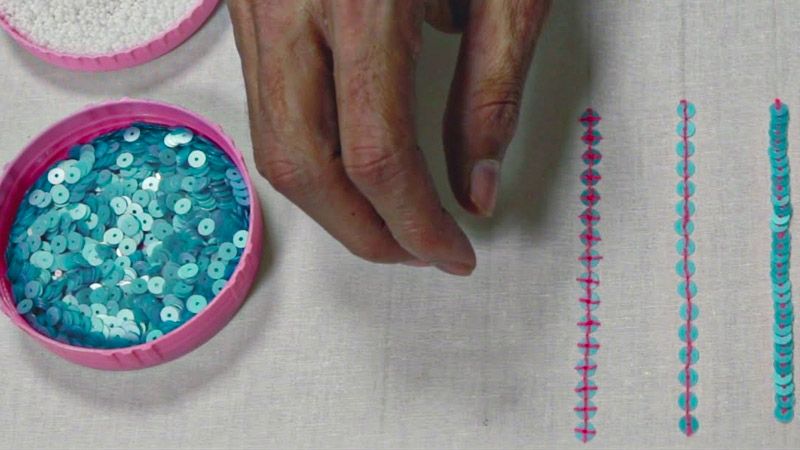
Taking care of hand-sewn sequins is crucial to preserve their beauty and extend the lifespan of the garments or items they adorn.
Here are some essential tips for maintaining and protecting hand-sewn sequins:
Avoid Rough Handling
Sequins, especially hand-sewn ones, are delicate and can easily become damaged or detached with rough handling.
Avoid excessive rubbing or tugging when wearing or storing sequined garments. Be mindful of sharp objects or surfaces that could snag or scratch the sequins.
Store Properly
Proper storage is essential to preserve the quality of hand-sewn sequins. Store garments in a cool, dry place away from direct sunlight.
Padded hangers are ideal for hanging sequined clothing to prevent stretching and distortion. Protecting sequins from exposure to sunlight helps prevent fading and tarnishing over time.
Spot Clean When Necessary
Address stains or spills promptly to prevent them from setting. Use a mild detergent and a soft cloth for spot cleaning. Gently blot the stained area; avoid rubbing, as it can cause sequins to loosen.
Test the detergent on an inconspicuous area of the fabric to ensure it won’t damage it or the sequins.
Hand Washing
For a thorough cleaning, hand washing is often the best option. Fill a basin with cold water and use a mild detergent suitable for delicate fabrics. Submerge the garment and gently agitate the water to create suds.
To clean the fabric without damaging the sequins, avoid scrubbing or twisting. Rinse the garment thoroughly with cold water to remove any soap residue.
Turn Garments Inside Out
Before washing or storing, turn the garment inside out. This simple step protects the sequins from friction and abrasion, reducing the risk of damage.
Mesh Laundry Bag
When machine washing is necessary, place the sequined garment inside a mesh laundry bag. This added layer of protection minimizes contact with other clothing items, reducing the chances of snags and damage during the wash cycle.
Gentle Cycle
Opt for a washing machine with a gentle or delicate cycle. Select cold water to prevent any damage to the sequins or fabric. Avoid using high-speed spin cycles, as they can place stress on both the sequins and the fabric.
Avoid Dry Cleaning
Dry cleaning, while suitable for some garments, can be harsh on hand-sewn sequins. The chemicals and processes used in dry cleaning may weaken the delicate threads holding the sequins in place, leading to potential damage or loss.
Drying
After washing, lay the sequined garment flat on a clean, dry towel to air dry. Avoid hanging it by the shoulders or any part that could stretch the fabric or distort the sequins.
Never wring or twisting the garment to remove excess water, as this can cause both the fabric and sequins to lose their shape.
Inspect for Loose Sequins
Regularly inspect the garment for loose or missing sequins. Over time, some sequins may become loose due to wear and tear.
If you notice any, reattach them using a fine needle and matching thread. This simple maintenance helps ensure your garment continues to sparkle.
Ironing
If you need to iron a sequined garment, exercise caution. Place a pressing cloth or a thin towel between the iron and the sequins on the lowest heat setting. Direct contact with the iron can melt or distort the sequins, so take care to avoid it.
FAQS
When sewing sequins on stretchy fabrics, consider using a ballpoint needle, which is designed for knit materials.
Stretch the fabric slightly while sewing to accommodate the fabric’s elasticity and ensure a secure attachment.
Hand-sewn sequins are generally delicate, so it’s best to hand wash or use a gentle cycle with cold water to prolong their lifespan.
For curved or intricate designs, consider using smaller sequins and sewing them closer together to follow the shape smoothly.
Yes, you can sew sequins onto leather or faux leather.
To prevent thread tangling when sewing many sequins, use a shorter length of thread, around 12-18 inches, and rethread your needle as needed.
To Recap
Sewing sequins by hand is a captivating craft that allows you to transform ordinary fabrics and projects into extraordinary works of art. As we’ve explored in this guide, it’s a meticulous process that requires attention to detail and creativity.
The final result, however, is well worth the effort—a stunning, customized piece that radiates glamour and individuality.
Whether you’re creating a dazzling gown, reviving a vintage treasure, or adding a touch of sparkle to your crafts, mastering the art of hand-sewn sequins opens up a world of possibilities.
So, grab your sequins, needles, and thread, and let your creativity shine as you embark on this timeless journey of embellishment and style.
Leave a Reply